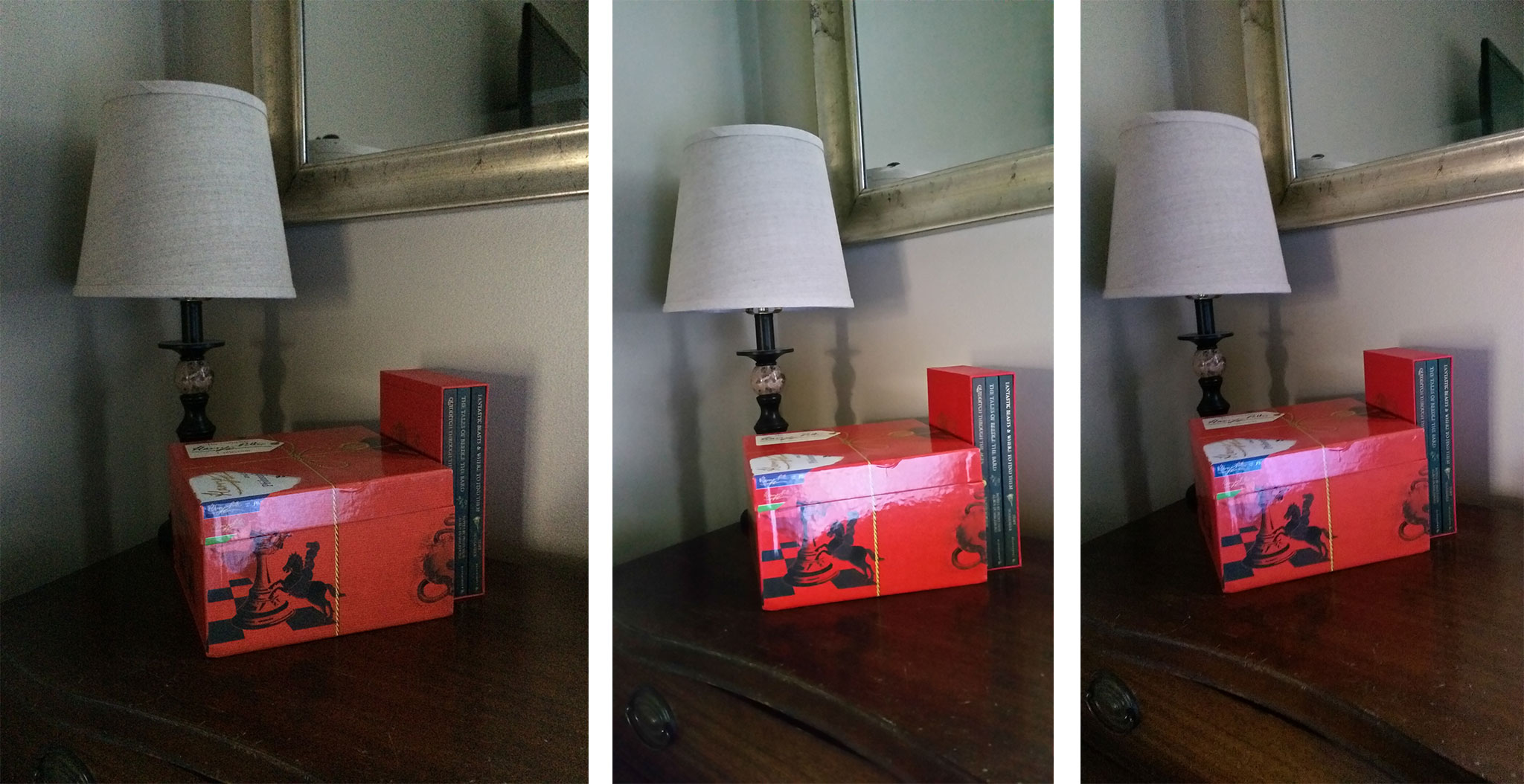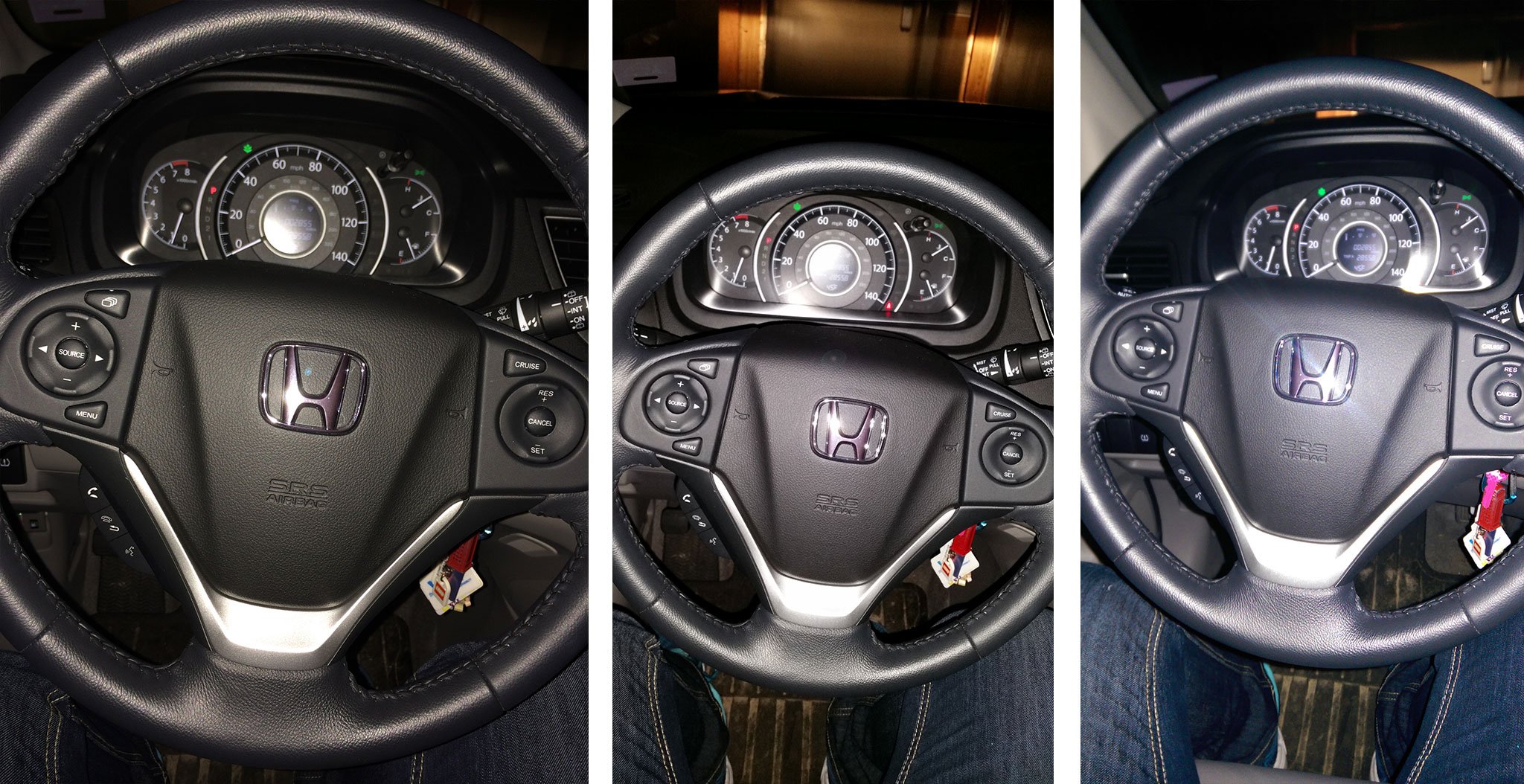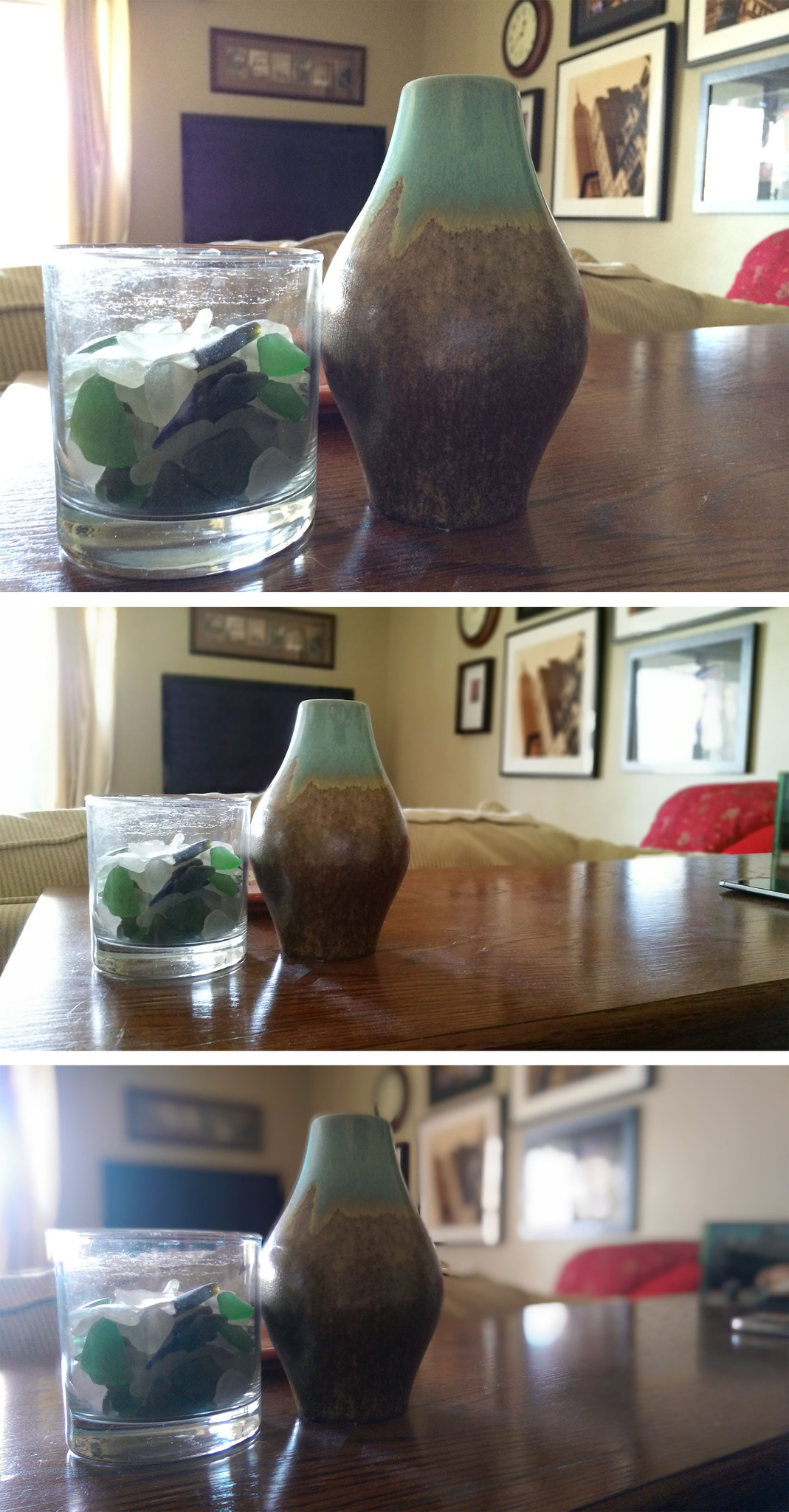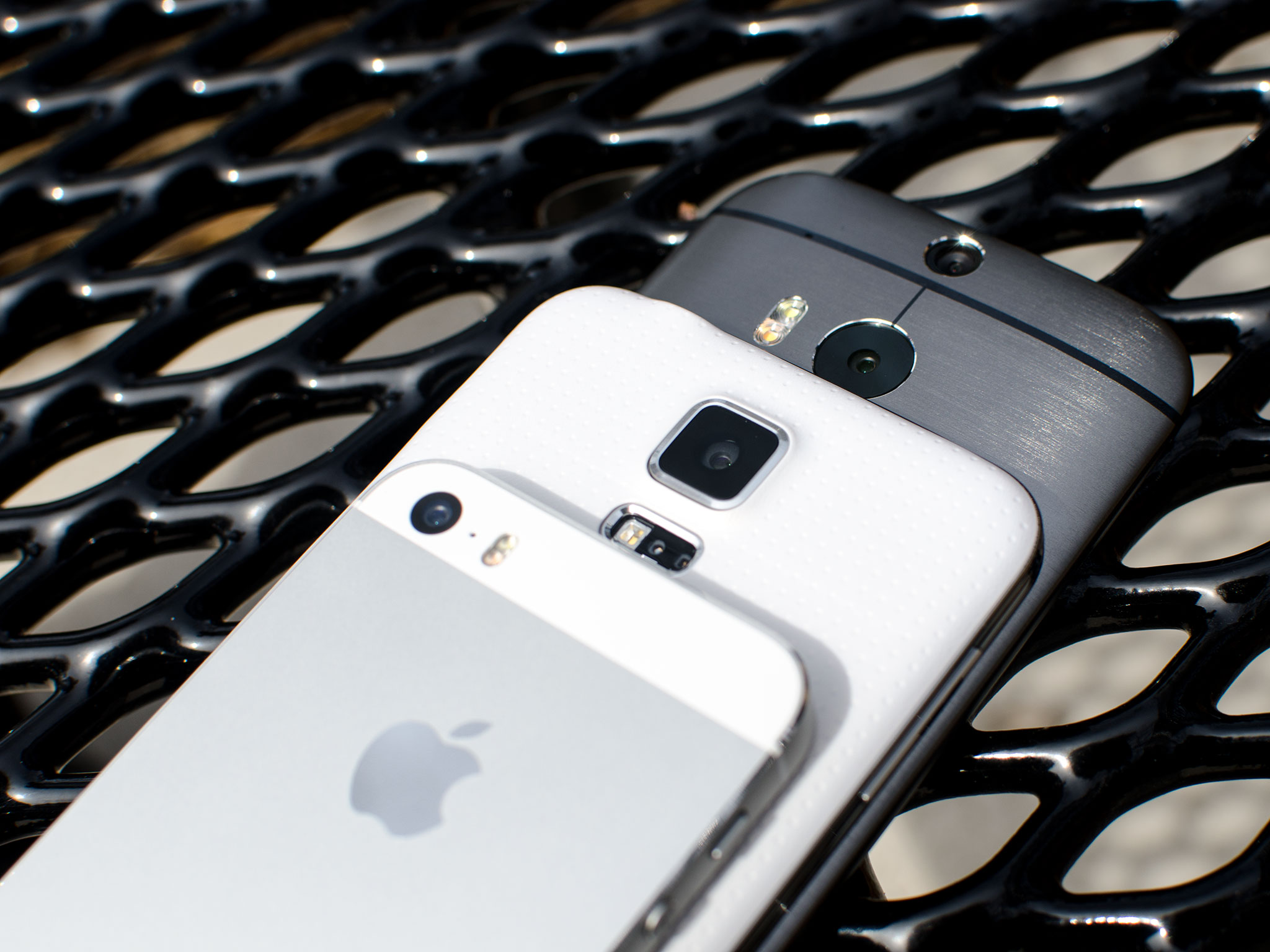Smartphone cameras are getting better and better every day. We've already put the iPhone 5s and the HTC One M8 head to head, so it's only fair we give Samsung's Galaxy S5 the same treatment. Even though the iPhone 5s is already approaching 7 months old, until Apple releases the iPhone 6, these are the options we have to choose from right now. If camera quality is a deciding factor for you when making a smartphone purchase, follow along to see how the Galaxy S5, iPhone 5s, and HTC One M8 hold up not just on paper, but in the real world!
iPhone 5s vs. Galaxy S5 vs. HTC One M8: Camera specifications
The iPhone 5s has an 8 megapixel (2448x3264) iSight camera with a pixel size of 1.5 micrometers, and an f/2.2 aperture. The HTC One M8 has not one, but two rear cameras. HTC calls it a Duo camera. The main lens sports a 4 megapixel (1520 × 2688) UltraPixel sensor with an f/2.0 aperture and a pixel size of 2.0 micrometers. The secondary lens is there strictly to gather information about depth. Both the iPhone 5s and HTC One M8 feature backside illumination (BSI) which gets the wiring out of the way so the sensor can capture as much light as possible. The Samsung Galaxy S5 contains a 16 megapixel (5312x2988) camera with a pixel size of 1.12 micrometers, and an aperture of f/2.2. The S5 also features backside illumination, or BSI.
Each manufacturer has made different tradeoffs, but who made the best ones? Looking at tech specs alone I would assume the HTC One M8 would fair decently well in low light while the iPhone 5s and Samsung Galaxy S5 should produce clearer, crisper images in everyday situations. Not only that, they should have much less noise due to a higher resolution. That's what the specs on paper say, but what we're really interested in is how they compare in the real world.
iPhone 5s vs. Galaxy S5 vs. HTC One M8: Testing method
To keep samples consistent, I always used as close to the same settings as possible on all three devices. If a device offeres a specific feature that would make photos better overall, those are fair game. For example, all of the samples of the Galaxy S5 had picture stabilization enabled. The iPhone 5s was always in HDR Auto mode. Where appropriate on the HTC One M8 I enabled HDR. Anytime there was a setting I could use that would capture the best overall photo, I used it. My only rule for this comparison was that each camera got one chance to capture the best shot it possibly could.
iPhone 5s vs. Galaxy S5 vs. HTC One M8: Everyday and HDR photography
From left to right: iPhone 5s, Samsung Galaxy S5, HTC One M8








For everyday and HDR photography I kept HDR mode either on or on auto in order to let the software decide when it needed to use it. Upon first comparing samples I found the iPhone 5s and the Samsung Galaxy S5 to produce truer colors. For some reason the HTC One M8 always seems to give blues a teal tint, which isn't actually what's in front of me. It also struggles in bright light where the iPhone 5s and Samsung Galaxy S5 run circles around it. The iPhone 5s and the Galaxy S5 tend to show saturation slightly differently but at this point it's going to be more preference. The iPhone 5s leans more towards natural tones while the Galaxy S5 seems to boost colors slightly, which some folks may actually prefer.
Winner: Samsung Galaxy S5 and iPhone 5s (tie).
iPhone 5s vs. Galaxy S5 vs. HTC One M8: Low light photography
From left to right: iPhone 5s, Samsung Galaxy S5, HTC One M8





For low light I didn't take photos in a pitch black room, but instead I looked for natural low light environments that we experience while taking photos. Not dark enough to need a flash but dark enough to challenge the camera. The HTC One M8 and the Galaxy S5 both did a better job than the iPhone 5s. The HTC One M8 produced slightly more noise in some instances but we can probably blame that on the lower resolution. All produced passable images but the M8 and Galaxy S5 produced consistently better ones than the 5s.
Winner: Samsung Galaxy S5 and HTC One M8 (tie)
iPhone 5s vs. Galaxy S5 vs. HTC One M8: Macro photography
From left to right: iPhone 5s, Samsung Galaxy S5, HTC One M8





For macro photography I didn't use the zoom feature at all and focused instead on getting as close as I possibly could to objects before losing focus. I'll start by saying that in most instances all three devices produced more than passable images. There are small differences however. First, the HTC One M8 still shows it's weak spot with bright light anytime you're outdoors. In the photo of the yellow and white flowers above you can clearly see it blows out the sun in the upper left corner. The Galaxy S5 and the iPhone 5s both balance macro shots well. The main difference I found was that I could get in slightly closer to an object before losing focus with the iPhone 5s. However, the difference is so small it's pretty much negligible.
Winner: iPhone 5s and Samsung Galaxy S5 (tie).
iPhone 5s vs. Galaxy S5 vs. HTC One M8: Flash photography
From left to right: iPhone 5s, Samsung Galaxy S5, HTC One M8




When I initially compared the iPhone 5s to the HTC One M8 I found that the flash in the iPhone 5s that Apple touts as true tone is more than what it seems. I found that to be true again. The HTC One M8 casted a yellowish light on subjects in most of my samples. The Samsung Galaxy S5 however kept pace with the iPhone 5s nicely. In some instances — like in the photo of the steering wheel — the S5 was harsher than the iPhone 5s but not by much. Both phones produce well balanced photos with the flash enabled.
Winner: Samsung Galaxy S5 and iPhone 5s.
iPhone 5s vs. Galaxy S5 vs. HTC One M8: Action photography
From left to right: iPhone 5s, Samsung Galaxy S5, HTC One M8




The iPhone 5s, Galaxy S5, and the HTC One M8 all do decent jobs when capturing motion. I had a hard time stumping any of them and hardly ever got motion blur. Considering all three devices have a decent burst mode, it isn't very hard to get a useable shot in a pinch. The HTC One M8 does have a habit of producing consistently darker images though, which may bother some folks. The Galaxy S5 and the iPhone 5s produced bold shots almost every single time.
Winner: iPhone 5s and Samsung Galaxy S5.
iPhone 5s vs. Galaxy S5 vs. HTC One M8: Digital zoom
From left to right: iPhone 5s, Samsung Galaxy S5, HTC One M8





To test the digital zoom feature in each camera I zoomed in as far as each phone would allow me. The HTC One M8 was the first to surrender with images becoming grainy rather fast. We can attribute this mainly to the lower resolution. The iPhone 5s and Galaxy S5 both captured usable images but the iPhone 5s let me zoom in farther and didn't really sacrifice too much image quality in order to do so.
Winner: iPhone 5s.
iPhone 5s vs. Galaxy S5 vs. HTC One M8: Panoramas
From top to bottom: iPhone 5s, Samsung Galaxy S5, HTC One M8




When it came to capturing panoramic shots, the first thing I noticed is that the software behind the iPhone 5s almost always produces the most balanced and consistent images of the three. The HTC One again struggles in bright light, as is evident of the panoramic containing the car. The Samsung Galaxy S5 kept pace with the iPhone 5s nicely. It blew out light in a few instances but not many. The surround shot add-on for the Galaxy S5 is also super simple to use and produces just as great of shots, if not better ones, than the built-in panoramic mode. It's available as a free add-on in the Samsung apps store and for anyone with a Galaxy S5, installing it should be a no brainer.
Winner: iPhone 5s and Samsung Galaxy S5 (tie).
iPhone 5s vs. Galaxy S5 vs. HTC One M8: Depth of field
From top to bottom: iPhone 5s, Samsung Galaxy S5, HTC One M8



Depth of focus, or bokeh for those familiar with photography terms, seems to be all the rage these days. Both the Samsung Galaxy S5 and the HTC One M8 have features specializing in this. The iPhone 5s however, does not. Of course you can download App Store apps to add blur after capturing the photo, but natively, the iPhone 5s adds some blur on its own but the effect isn't terribly noticeable most of the time. The Galaxy S5's Selective Focus feature does a decent job, when it works at least. I had a hard time getting photos that it would apply a depth of field effect to. It's the only camera test in this series I took multiple shots considering I couldn't always get what I needed. The HTC One M8's UFocus feature on the other hand is a post capture effect which makes it easy to apply in almost any image. You can also change the focus afterwards which makes it incredibly useful.
Winner: HTC One M8.
iPhone 5s vs. Galaxy S5 vs. HTC One M8: The bottom line

I still stand by my initial HTC One M8 conclusion. HTC should have spent more time building a better camera and less time on gimmicks such as UFocus and 3D effects. They're fun to use but at the end of the day, it doesn't help us capture better all around photos. Light is blown out in places where it shouldn't be and its competitors easily leave it in the dust. The low resolution also rears its ugly head anytime you want to zoom in or enlarge a photo. It makes it really hard for me to recommend it over the iPhone 5s or the Samsung Galaxy S5 based on camera merits alone.
That leaves the iPhone 5s and the Galaxy S5 and that's where it gets a little less cut and dry. The iPhone excels in areas such as panoramic, flash, and macro photography. A lot of this can be attributed to the A7 chipset and the software behind the Camera app. However, the Samsung Galaxy S5 takes some amazing photos and in low light, does an even better job than the iPhone 5s. It balances HDR and everyday photographs just as well. They both handle saturation and white balance slightly differently but they're so close, it almost comes down to personal preference. They're both exceptionally great all around cameras.
So which one should you choose? If you take a lot of indoor and low light photos, the Galaxy S5 will serve you better. For flash and macro photos, the iPhone 5s still reigns supreme. For everything in between, most folks would be happy with either device as far as the camera is concerned.
Make Sure U Liked Our Facebook And Follow Our Twitter Profile If You Enjoyed This Post Please Take 5 Seconds To Share It And Like It Thz


















